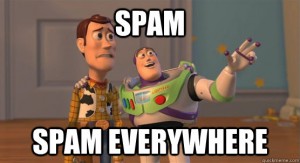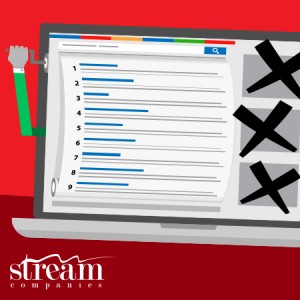
With PPC advertising, a game plan can really come in handy. At the same time, it can be confusing to know where to invest your time and money. With all of the different search engines and social media platforms that are available for advertising, some confusion is inevitable.
Planning your PPC strategy might be a little easier if we think of it as a tree. Much like a tree, it should have multiple branches, and strong ones at that. Let’s talk about three key branches of your PPC tree and how they’ll make your campaign a success.
The “Big 3” Search Engines
These search engines are probably the ones you’re most familiar with. Google, Yahoo!, Bing… All tier 1. These are the big players in the PPC advertising game.
Why?
The main advantage with these search engines is high visibility.
Considering that “Google” has become lingo for “search” (i.e.: “You can Google that”), it’s obvious that there are a whole lot of people out there who use Google and these other “big guys” to find what they’re looking for on the web.
By incorporating tier 1 search engines into your PPC campaign, you’ll be able to get your brand out there to a whole lot of potential customers, and get a whole lot of clicks.
Tips
Here are some hints to make your tier 1 branch as strong as it can be:
- Don’t be afraid to overspend at first. Putting a chunk of money into this from the start might sound like a big mistake, but it’s a good way to quickly learn what works and what doesn’t. It’s also necessary if you’re going to be competing with the big boys for coveted keywords like competitor terms. By putting in some extra dough in the beginning, you’ll be able to more quickly and efficiently adjust what needs to be optimized.
- Keep up with it. PPC advertising isn’t something you can set and forget. Like with most things in life, you’ll get out what you put in. Using an analytics tool can help keep you on the right track by showing your campaign’s strengths and weaknesses so you can improve it.
- Don’t put all your eggs in one basket. People sometimes make the mistake of only using tier 1 search engines for PPC. This is a mistake, simply because it’s not all that’s out there.
That brings us to our next PPC tree branch…
Alternative Search Engines
Tier 2 search engines include… well, everyone else. These ad networks are the ones you’re probably not-so-familiar with, but you should be. Alternatives like eZanga (represent!) are smaller than search engines like Google, but they offer PPC advertising just like tier 1s.
Why?
Even though these search engines are smaller, it’s important to remember that great things can come in small packages. As you know, the big 3 cover your broad market visibility, but what about the niche markets?
With a lot of alternative ad networks, the niche market is already defined. Let’s take WebMD for example. The niche here is medical, so if you’re looking to market something like medical supplies, this might be a better choice than a tier 1 search engine.
They’re also good for your wallet. Although there’s less traffic on these sites, the upside is lower cost-per-click (CPC) and higher return on investment (ROI).
Tips
When planning your tier 2 search engine course of action, keep these tips in mind:
- Use long-tail keywords. They come with less search volume, but bidding on long-tail keywords in a niche market has benefits, too. They’re easier to rank for in search engines and have better conversion rates..
- Don’t spend too much time on it. Yes, using tier 2 search engines is an important part of your PPC campaign. However, it’s not the end of the world if your tier 2 ads aren’t bringing home the bacon like you thought they might. When it’s all said and done, your Google AdWords campaigns might bring you the most traffic, but your tier 2 campaigns more targeted traffic might complement it nicely.
- Work with your account rep. With less traffic and customers, tier 2 search engine account reps will be more accessible to you and able to cater to your individual needs.
Social PPC
As I told you in my last post about becoming a social PPC butterfly, social PPC is simply PPC through social media sites.
Why?
74% of us use social media platforms. That’s a lot of potential customers that can be reached through social media.
Not only does social PPC reach a lot of people, but it involves no effort on the user’s part. Your ads show up on their news feed no matter what. If they like your ad, they click.
Tips
Check out my tips on doing social PPC the right way:
- Don’t be afraid to start big. Start by advertising on the most well known and widely used social media sites, such as Twitter and Facebook. These sites have the most users and will give your campaign a good running start.
- Copy should be a priority. Strong message match between ads and landing pages, visual presentation, and a clear CTA are all things that you should pay attention to. Solid content is what’s going to get people to click.
- Keep track of your progress. Using an analytics program to measure your results is pretty important. This will let you know whether your strategy is working the way it should be. An analytics tool can help you efficiently track and improve your campaign.
Well there you have it, three of the most important branches of your PPC campaign “tree.” With a little TLC, your tree’s branches will be big and strong, sending you on your way to PPC success.
(349)
Report Post






